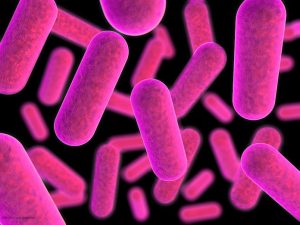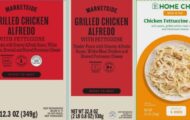The Foster Farms Salmonella outbreak has consumers wondering, how did we get here? How can a company that has sickened at least 472 people, many of whom have been hospitalized with drug-resistant infections, tell consumers their product is safe if handled properly and not issue a recall? And why, if the U.S. Department of Agriculture (USDA) found Salmonella levels on chicken produced at the company’s Fresno plant to be three and half times the federal standard, has production continued uninterrupted.
The answer is Supreme Beef.
 During the 1990s, Supreme Beef Processors Inc., a Dallas meat processor and grinder, supplied millions of pounds of ground beef to the National School Lunch Program. In 1999, Salmonella on the product became a point of concern for the USDA. In testing, Salmonella levels on beef were found to exceed the standard three times in eight months. In one test, 47 percent of samples were found to be contaminated with Salmonella.
During the 1990s, Supreme Beef Processors Inc., a Dallas meat processor and grinder, supplied millions of pounds of ground beef to the National School Lunch Program. In 1999, Salmonella on the product became a point of concern for the USDA. In testing, Salmonella levels on beef were found to exceed the standard three times in eight months. In one test, 47 percent of samples were found to be contaminated with Salmonella.
When the USDA notified the company that it intended to pull its inspectors from the plant, which would halt operations, Supreme Beef filed suit saying Salmonella is naturally occurring and therefore not an adulterant subject to government regulation. What’s more, the company argued, Salmonella can be killed if meat is cooked. They won.
The court agreed with Supreme Beef’s arguments, now echoed almost verbatim by Foster Farms, and its contention that test results showing higher-than-standard Salmonella levels were not a result of sanitary conditions in the plant. The USDA appealed and lost again. The lower court’s decision was upheld by the U.S. Court of Appeals Fifth Circuit.
The only bright spot for consumers to emerge from the story is that the court in the initial case did not compel the USDA, which operates the National School Lunch Program, to honor those contracts with Supreme Beef, sparing thousands of children, who are at special risk for Salmonella infections, possible exposure to the bacteria on their lunch trays. But the loss of the contract led to the company’s bankruptcy.
“Having lost its government contracts and many other customers, Supreme Beef was forced to seek Chapter 11 bankruptcy in September 2000. Its case was subsequently converted to Chapter 7,” the company argues in court documents. However expensive Supreme Beef thought fixing its Salmonella problem would be, it couldn’t have cost them as much as the strategy they pursued instead.
Companies that produce meat and poultry have been required since 1998 to have their own plan for controlling levels of harmful bacteria in their plants. The Pathogen Reduction, Hazard Analysis and Critical Control Point Systems (HACCP) was created out of the USDA’s Food Safety an Inspection Service’s (FSIS) desire to reshape the meat inspection process for a more modern world, shifting focus from the physical inspection of meat to the detection of microscopic pathogens.
“The rule addresses the serious problem of foodborne illness in the United States associated with meat and poultry products by focusing more attention on the prevention and reduction of microbial pathogens on raw products that can cause illness. It also clarifies the respective roles of government and industry in food safety. Industry is accountable for producing safe food. Government is responsible for setting appropriate food safety standards, maintaining vigorous inspection oversight to ensure those standards are met, and maintaining a strong enforcement program to deal with plants that do not meet regulatory standards,” according to the USDA FSIS’ own description.
On October 7, the USDA sent Foster Farms three letters, one for each plant producing chicken contaminated with the Salmonella strains identified in the outbreak. The letters state that the company was notified of its link to the outbreak in July, three months before the public was alerted. And, the during those months, Foster Farms failed to adequately reassess and modify its HACCP plan to control food safety hazards as was evidenced by intensified testing in September which showed a high frequency of Salmonella, including the outbreak strains.
Although the letters threatened to shut down the plants, three days after the were sent the USDA decided that Foster Farms had at last made a plan to address the problem and could stay open. Three days after that, a San Francisco Costco store issued a recall for more than 9,000 Foster Farms rotisserie chickens linked through lab tests to the ongoing Salmonella outbreak that has sickened 338 people in 20 states. That recall was expanded Oct. 18 to include 14,000 additional rotisserie chicken units sold at the store Sept. 24 and Oct. 15, 2013.
Foster Farms has maintained since the announcement of the first Salmonella outbreak that its products are safe to eat if handled properly. The USDA has not disclosed the actions Foster Farms took or planned to take to address the Salmonella problem, but after all these months, two outbreaks, and at least 500 people sick, it looks like the plan needs tweaking.




